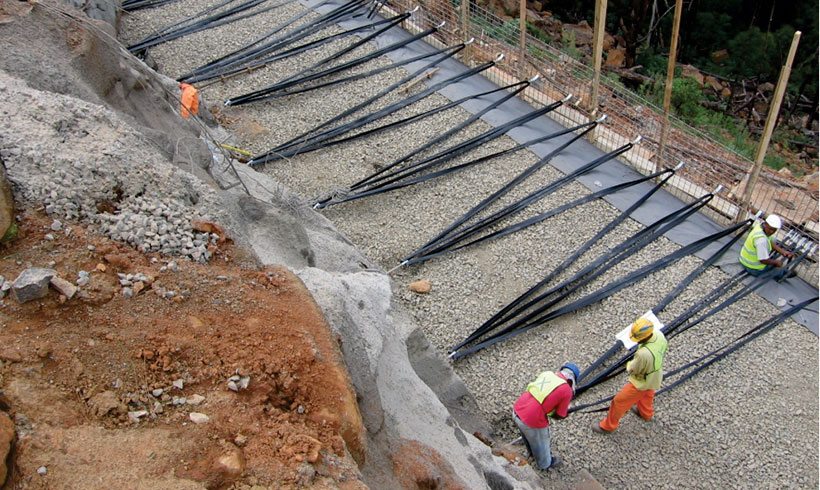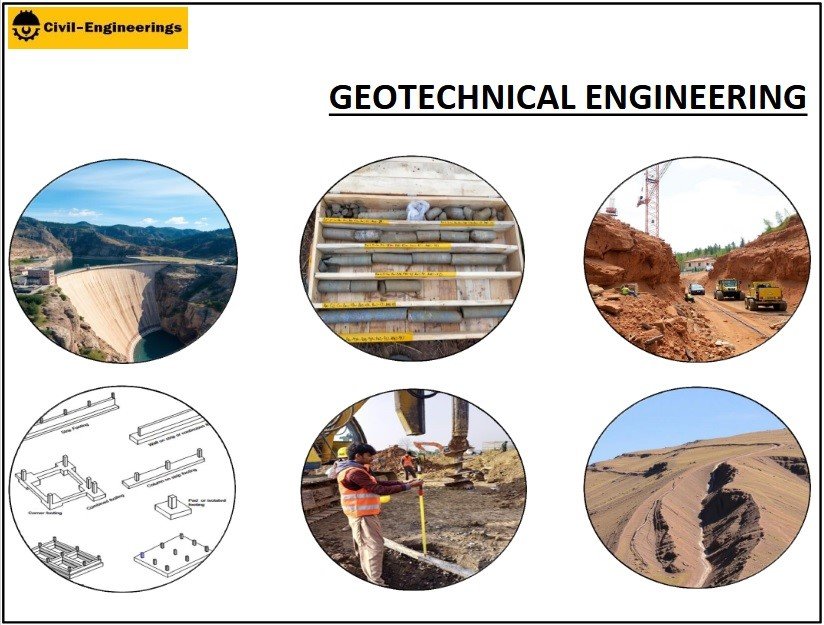4 Easy Facts About Geotechnical Engineering For Construction Projects Shown
The Main Principles Of Geotechnical Engineering For Construction Projects
Table of ContentsFascination About Geotechnical Engineering For Construction ProjectsThe 10-Second Trick For Geotechnical Engineering For Construction ProjectsAn Unbiased View of Geotechnical Engineering For Construction ProjectsWhat Does Geotechnical Engineering For Construction Projects Do?The Best Guide To Geotechnical Engineering For Construction ProjectsThe 4-Minute Rule for Geotechnical Engineering For Construction ProjectsNot known Facts About Geotechnical Engineering For Construction Projects
and Kovacs, W. (1981 ), An Intro to Geotechnical Engineering, Prentice-Hall, Inc. Deep Scan Tech (2023 ): Deep Check Technology discovers hidden structures at the site of Denmark's highest structure. "Geofrost Coring". GEOFROST. Recovered 20 November 2020. Han, Jie (2015 ). Concepts and Method of Ground Enhancement. Wiley. ISBN 9781118421307. RAJU, V. R.Ground Renovation Technologies and Situation Histories. Singapore: Research Publishing Providers. p. 809. ISBN978-981-08-3124-0. Ground Improvement Principles And Applications In Asia. Pariseau, William G. (2011 ). Design analysis in rock auto mechanics. CRC Press. Hegde, A.M. and Palsule P (Geotechnical Engineering for Construction Projects).S. (2020 ), Performance of Geosynthetics Reinforced Subgrade Subjected to Repetitive Car Plenties: Experimental and Numerical Research Studies.
Cengage Understanding, Stamford, 666 p. Atkinson, J., 2007. The mechanics of soils and structures. The Observational Method in ground engineering principles and applications.
All about Geotechnical Engineering For Construction Projects
Research laboratory and field screening plays a crucial role in this procedure. By drawing out examples from the earth's subsurface and applying a collection of tests, geotechnical designers can anticipate the practices of dirt layers and assess their viability for different construction endeavours. The significance of geotechnical engineering in civil design can not be overstated, attributable to numerous factors: The preliminary action in any type of geotechnical research entails figuring out the soil type at the construction website.
Recognizing these characteristics makes sure that only ideal soil kinds are picked for the development, consequently preventing possible structural failings. The structure serves as the bedrock of any kind of building task. Selecting the proper foundation kind is a decision that depends upon the thorough analysis offered by geotechnical design. This guarantees the durability and security of frameworks by fitting the lots they will bear.

Geotechnical site investigation is an essential action in the preparation and implementation of any type of building job. It involves the collection and analysis of data associated with the physical residential or commercial properties of soil and rock beneath a recommended building site. This info is important for the layout and construction of safe, secure, and lasting frameworks.
All About Geotechnical Engineering For Construction Projects
In this blog, we will dive into the relevance of geotechnical website investigation, its different parts, and just how it benefits construction tasks. Geotechnical site examination, likewise known as subsurface expedition, involves a collection of tasks focused on identifying the dirt, rock, and groundwater conditions at a building and construction website. The primary purposes are to identify possible geotechnical hazards, examine the engineering homes of subsurface products, and offer referrals for the layout and building of structures, maintaining wall surfaces, and other frameworks.
This may include geological maps, aerial photos, previous examination records, and historical data. The desk research study assists in recognizing potential geotechnical issues and planning the subsequent fieldwork. Adhering to the desk research, a website linked here reconnaissance is conducted to visually evaluate the site and its surroundings. This involves observing the topography, drain patterns, existing structures, plant life, and any kind of indicators of instability or erosion.
Geotechnical Engineering For Construction Projects - Truths
Shallow test pits are excavated to straight observe and sample the dirt and rock. This method works for researching the top layers of the subsurface and determining near-surface hazards. Non-invasive geophysical approaches, such as seismic refraction, ground-penetrating radar (GPR), and electric resistivity tomography (ERT), are used to map subsurface problems and spot abnormalities.
Dirt more information and rock examples collected during the area investigation are subjected to research laboratory screening to identify their physical and mechanical homes. These examinations offer crucial data for geotechnical analysis and style.
The key benefit of geotechnical website investigation is ensuring the security and stability of structures. By recognizing the subsurface conditions, engineers can create structures and other architectural components that can endure the tons and environmental pressures they will certainly undergo. This minimizes the risk of settlement, subsidence, and architectural failing.
Geotechnical Engineering For Construction Projects Things To Know Before You Buy
This ensures effective and safe construction methods. Geotechnical website investigations are frequently called for by developing codes and laws.
This information is very useful for task supervisors, engineers, and specialists in creating reasonable timetables, spending plans, and contingency strategies. Geotechnical Engineering for Construction Projects. Skyscraper Building in a Coastal AreaIn a coastal city, a skyscraper property structure was planned on a site with presumed loose sand down payments and a high water table. A thorough geotechnical investigation, including borehole drilling, CPT, and geophysical surveys, was conducted
Some Known Questions About Geotechnical Engineering For Construction Projects.
Based upon these searchings for, the structure style was modified to include deep pile foundations extending right into stable strata, and ground enhancement strategies, such as vibro-compaction, were carried out to reduce liquefaction risks. This aggressive strategy made certain the safety and security and security of the structure while preventing expensive post-construction remediation. Infrastructure Advancement on a Sloping TerrainA significant facilities task, entailing the construction of a freeway and bridges, was prepared on an uneven terrain with steep inclines.

The Leaning Tower of Pisa (Italy), a renowned building marvel, is infamous for its unplanned tilt from substantial geotechnical issues. The tower's foundation was inadequately made to handle the soft, unsteady soil below it, resulting in uneven settlement and its distinct lean. Our you can check here world is populated with excellent framework projectsfrom towering high-rises to stretching bridgesall standing statement to the advancement of the numerous building devices and techniques readily available.
Geotechnical design is a specific area within civil design that focuses on researching the behavior of earth materials. This branch dives deep into the groundinvestigating just how the soil, rock, and groundwater at a building site can influenceand be influenced bythe infrastructure that we put up on and right into them. Before a solitary block is laid or a concrete foundation put, geotechnical designers probe into the earthgathering essential information about the site's soil composition, rock structure, and groundwater levels.
Some Known Facts About Geotechnical Engineering For Construction Projects.

is a tool made use of to examine the integrity and load-bearing ability of piles throughout setup, leveraging the principle of wave proliferation. It maximizes building and construction efficiency by supplying real-time evaluations, therefore making sure risk-free and efficient heap foundations. Among the sensible applications of geotechnical design includes determining and carrying out the right methods for foundation building.
Pile driving represents greater than the mere act of inserting structural aspects into the ground. On the contrary, it is a very carefully managed process of moving a framework's load past the much less secure dirt layers better to the surfacedown to the more substantial strata that exist beneath. In the case of pile driving, consider exactly how geotechnical designers skillfully use this technique to equally distribute the structure's weight.